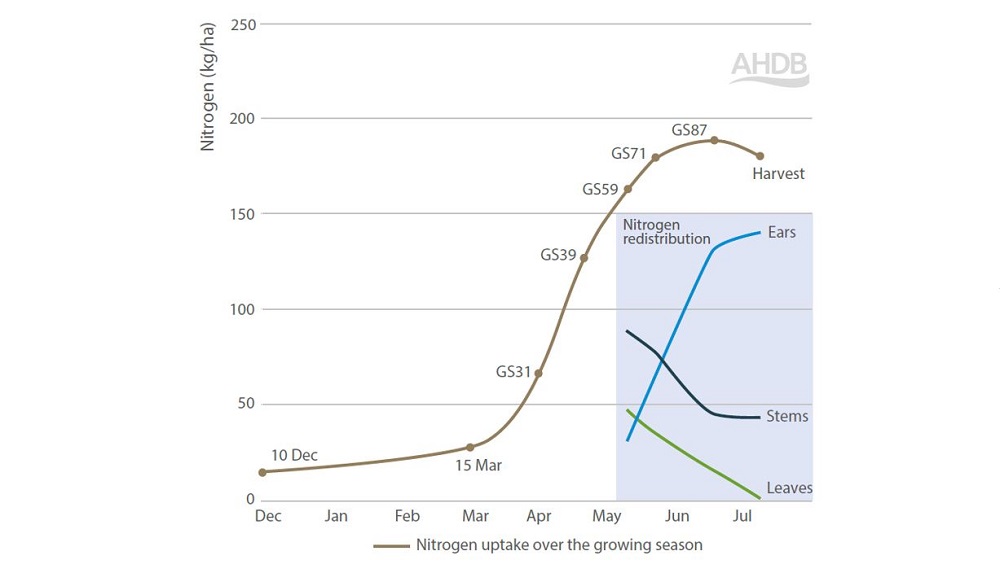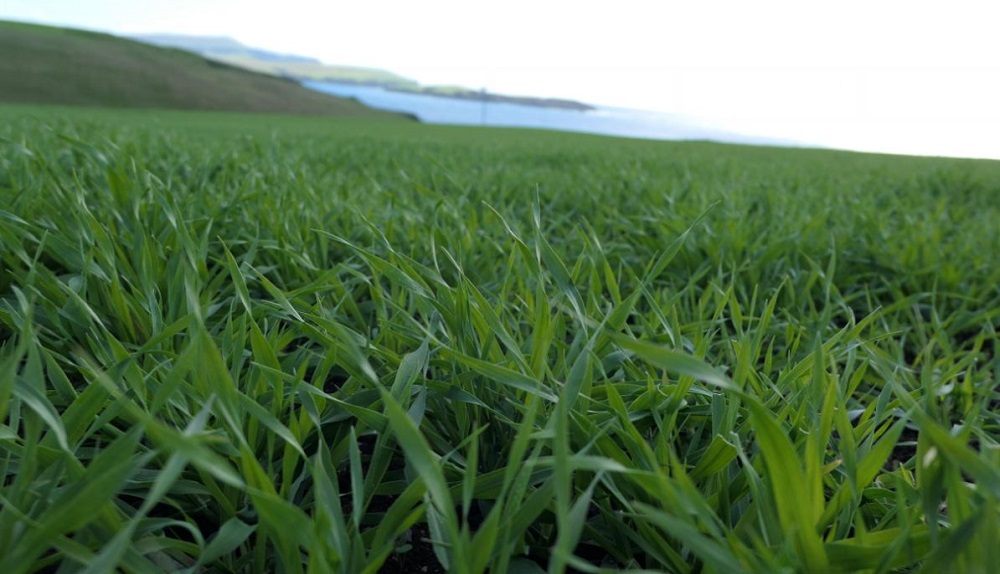- Home
- Knowledge library
- Nitrogen supply, demand and utilisation in barley
Nitrogen supply, demand and utilisation in barley
Unless adequate nitrogen (N) is made available, shoot numbers and yield will be restricted in barley. However, the nutrient needs to be managed carefully to reduce the risk of excess grain nitrogen concentrations and nitrate leaching.
Growth guides for wheat, barley and oilseed rape
Barley is usually grown after winter wheat (a crop with a high N demand), often on lighter, low N status soils, which are more prone to nitrate leaching. Soil N is rarely sufficient for crop requirement.
Pattern of nitrogen uptake (winter barley)
Varietal influence: Low
Other influences: N supply, temperature, sowing date
 AHDB
AHDB
Mid-March to GS31
Benchmark: Rate of N uptake = 1.2 kg/ha/day
Benchmark: Total uptake = 65 kg/ha by GS31
Rate of N uptake increases in mid-March, as warmer conditions stimulate canopy expansion through more rapid leaf emergence and tillering.
GS31 to GS39
Benchmark: Rate of N uptake = 3.1 kg/ha/day
Benchmark: Total uptake = 128 kg/ha by GS39
Rapid N uptake continues as canopy size increases through leaf emergence and tiller survival. N uptake by the crop determines canopy size, primarily by affecting shoot number.
GS39 to GS59
Benchmark: Rate of N uptake = 1.8 kg/ha/day
Benchmark: Total uptake = 163 kg/ha by GS59
GS60 to harvest
After ear emergence, relatively little N is taken up and N is redistributed within the plant. Protein in leaves and stems is transferred to form grain protein. However, root systems remain active after flowering and will take up N, if the soil is moist and there is mineral N in the soil profile.
How to measure cereal plant populations and nitrogen uptake
Response to fertiliser nitrogen (winter barley)
When the supply of N from the soil is insufficient to meet crop N requirement, fertiliser N applications should increase yield. There is, typically, a steep yield response to the initial N fertiliser dose, before plateauing near the optimum rate and sometimes decreasing at super-optimal rates, due to lodging.
Relationship between yield and grain N concentration for winter barley
.JPG) AHDB
AHDB
Yield (green line) and grain N% (blue line). Variety: Venture.
Nitrogen uptake/response in spring barley
- Yield is strongly dependent on timing and rate of N fertiliser applications
- If N is available after flowering, it will be taken up and accumulated in both straw and grains
- Spring barley grains have the capacity to store up to around 1 mg of N per grain at a concentration of 2.4%
- The N offtake in spring barley at harvest is typically 25–30% less than that of winter barley (i.e. 130 kg N/ha at harvest)
- Crops grown for feed, rather than for malting, have higher fertiliser N applications and greater N offtakes
How to manage nutrients in cereals (RB209)


